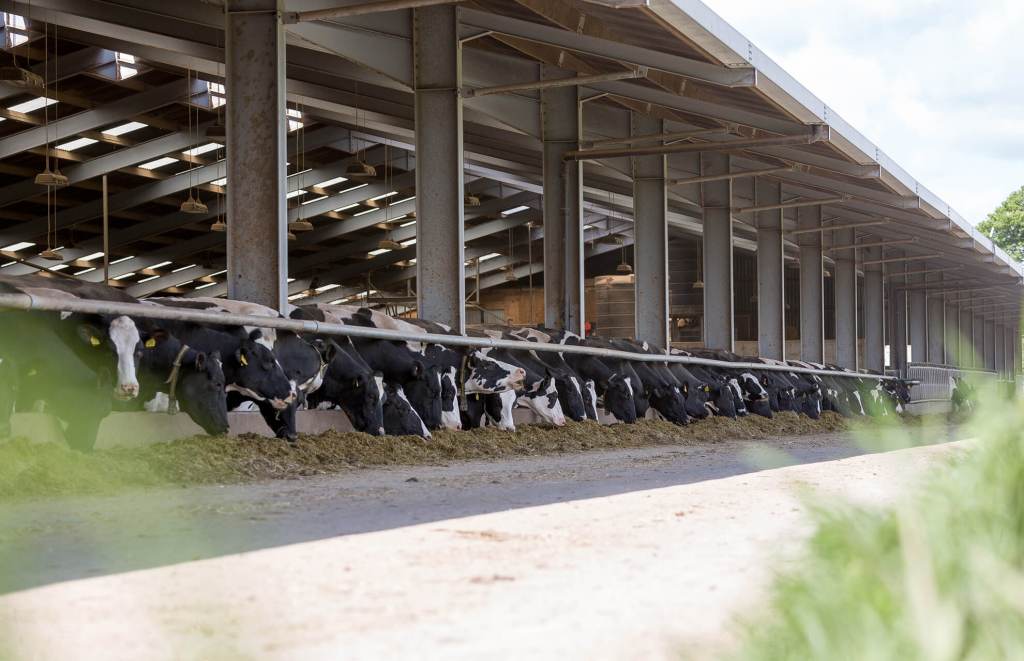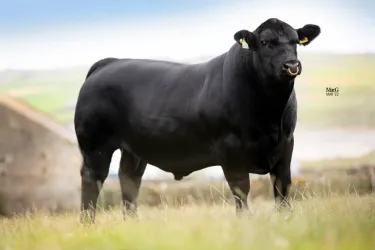Written by Mandy Schmidt for Progressive Dairy, U.S. 🇺🇸
“If everybody is thinking alike, then somebody isn’t thinking.”
General George S. Patton Jr., one of the top U.S. commanders in World War II
Although not necessarily directly in combat, dairy producers can relate with the legend’s drive in trying times. Nicknamed “Old Blood and Guts,” the general got results as a masterful strategist. His ideas were frequently contrary to common thought processes.
Likewise, historically traditional markets often need counterintuitive thinking to be viable in the future. Our industry, soaked in traditionalism and sentiment, is not exempt.
Not everyone can continue milking cows the same as previous generations. Worries about milk markets and labor laws affecting continuation are real. However, the one thing to be most afraid of is mediocrity.
When you produce a commodity product, you need unwavering pursuit to be above-average. Don’t bank on how to be just like everyone else. You are working to be smarter than the next, focusing on efficiency, differentiation and cash flow.
Don’t be normal
As dairying practices became more data-friendly, we shifted toward standardisation and benchmarking. One of the standardisation factors for genetics was the creation of generic indices, such as Net Merit Dollars (NM$) or Total Performance Index in the U.S.
Most countries have a primary index. For general benchmarking, indices are great tools. However, individual operation needs and regional milk markets have evolved. Relying on something intended to create the same for everyone can be risky.
Genetic programs can become stuck in autopilot with the “normal” industry index. Does it truly fit your dairy, milk market and facilities?
About 15 traits, not counting sub-traits in composites, are included in most industry indices. The NM$ formula is weighted based on the average future dairy’s needs. Not all traits are equally as important to all.
The standardisation formula might dilute the weighting of an important trait to you. Alternatively, overemphasis of an unimportant trait, to you, could lower a bull’s overall ranking who would otherwise be an excellent choice.
For example, even though conformation is less than 20 percent of the entire NM$ formula, relatively small changes to Udder Composite could influence around $100 of NM$. Today’s producers rarely sell cows involuntarily purely because of poor udders.
Most cows are functional enough, and the weighting could dilute more economically relevant traits to your genetic program, such as female fertility. A custom index with higher fertility weighting could help reduce days open and, ultimately, have a higher monetary value to your business.
Manage biology for profit with specific traits
A genetic adviser can help determine which traits will be most influential. If everything is working well from an environmental and management perspective, you should be able to see proof of genetic impact.
Predicted Transmitting Ability (PTA) traits have heritability factored into the internal calculation. PTAs estimate the difference in performance, in relation to breed average, which should be passed to the next generation.
For example, PTA Protein pounds are the pounds of protein offspring should produce above breed average. If a sire is +50 PTA Protein, a daughter should produce about 50 pounds more than daughters of breed-average sires.
With the same concept, Daughter Pregnancy Rate influences a 1 percent higher 21-day pregnancy rate for every 1 PTA point. Daughter Pregnancy Rate should also reduce days open by about four days per point increase. The difference between genetically superior and inferior animals should be apparent.
Playing genetic cards correctly can also align with niche markets, such as A2 beta casein milk marketing. Kappa casein is also becoming a point of conversation.
An industry index indicating an increase in profit does not promise positive impact to you. Your selection focus should correlate to your profitable increases.
Breeding plan – be trendy or be smart
Not planning a personalised genetic strategy is planning for average cows with average “earning potential.” However, a custom breeding plan, beyond custom trait selection, for sexed semen versus beef semen product blend is also wise (see sidebar).
Maximising sexed semen with top-genetic females to create the best replacements, and breeding low-genetic females to beef, is trendy right now. Ultra-trendy does not equal ultra-profitable for everyone.
To capture real benefit, consider your operation efficiencies and inefficiencies. Leverage data to uncover strengths and weaknesses. Also, acknowledge approaching changes from regulation and technology aspects.
Everything cycles except technology. It continues to improve. Sexed semen technology is not going away. It will likely never be as lucrative as it used to be, selling excess heifers. It is too easy to make too many mouths to feed.
Additionally, calf rearing has never been better. The industry has made great advances in preventing youngstock losses. You can more easily predict the number of heifers needed, barring a disaster, to enter your milking herd and replace culls. This allows for more beef use on older or genetically inferior animals.
This breeding approach may sound similar to many fellow producers’ plans in concept. However, in theory and in practice are not twins. Designing a plan needs to be based on your own operation, not a neighbor’s.
Sidebar
Consider these key management decisions prior to implementing a beef-on-dairy program:
– What are your herd size or expansion goals?
– Where is the point of diminishing returns for number of sexed semen services?
– How is fertility performance annually, and can sexed semen be used for cows?
– Does heat stress in the summer affect continuous sexed semen use?
– Will using embryos to eliminate low-profit genetics create a significant economic impact?
– What is the correct beef breed to optimize fertility with each breeding, calving ease, harvest results and capture a calf buyer premium?
– Do you have adequate facility and feed resources for potentially retaining ownership of beef-cross calves?
Originally published on Progressive Dairy






